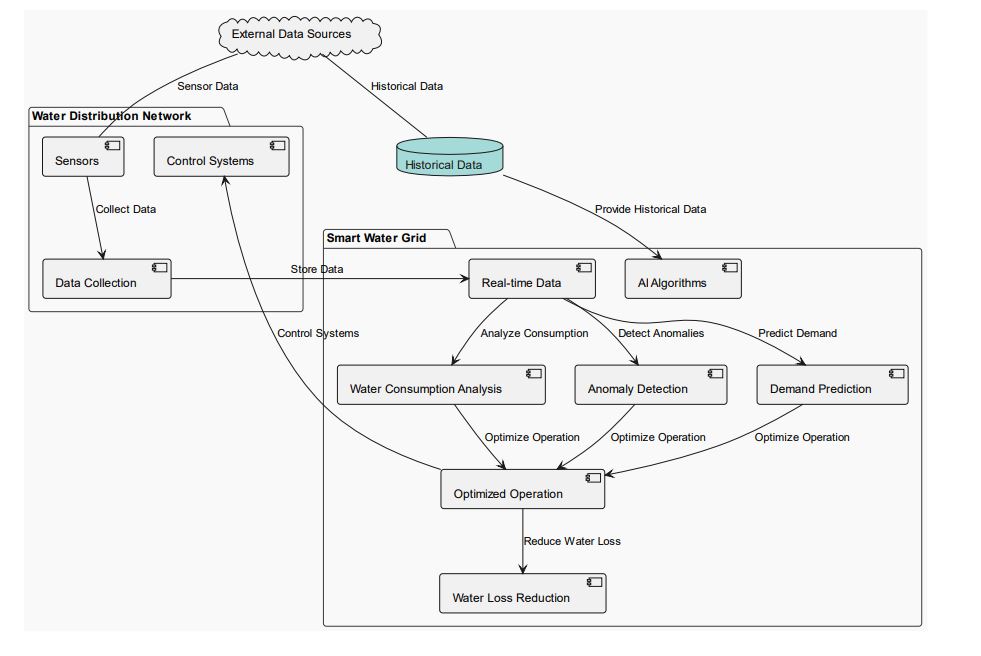AI-Enabled Water Management Systems: An Analysis of System Components and Interdependencies for Water Conservation
Keywords:
Water Management and Distribution, Weather Data Analysis, Satellite Imagery Processing, Sensor Networks, AI Algorithms, Water Demand Prediction, Leak DetectionAbstract
Water scarcity and drought pose significant challenges to sustainable development, making effective water management crucial. This research investigates the application of artificial intelligence (AI) in addressing water conservation issues by examining five key areas: water management and distribution, precision agriculture, water quality monitoring, drought prediction and early warning systems, and smart water grids. The study provides a high-level overview of the system components and their interdependencies in each domain. The first domain, water management and distribution, emphasizes optimizing water resource management through AI-driven analysis of diverse data sources. Components such as weather data analysis, satellite imagery processing, sensor networks, AI algorithms, water demand prediction, leak detection, and water distribution systems are interconnected to enable efficient water supply and minimize wastage. The second domain, precision agriculture, explores how AI technologies enhance water usage efficiency in agricultural practices. Remote sensing and machine learning algorithms, combined with components like soil moisture monitoring, crop health monitoring, and water requirement analysis, empower farmers with data-driven insights for informed irrigation decisions. Water quality monitoring, the third domain, leverages AI algorithms to analyze data collected from sensors and monitoring systems. By identifying contaminants, pollutants, and potential waterborne diseases, this approach ensures safe drinking water and enables early detection for preventive actions. Drought prediction and early warning systems, the fourth domain, employ AI algorithms to process historical climate data, satellite imagery, and meteorological information. Accurate drought forecasts facilitate timely alerts, empowering governments and communities to take proactive measures and plan for water scarcity situations effectively. Lastly, smart water grids leverage real-time data and AI analytics to optimize water distribution networks. Through consumption analysis, anomaly detection, demand prediction, and optimized operation, AI enables efficient management and reduced water loss in the system.
